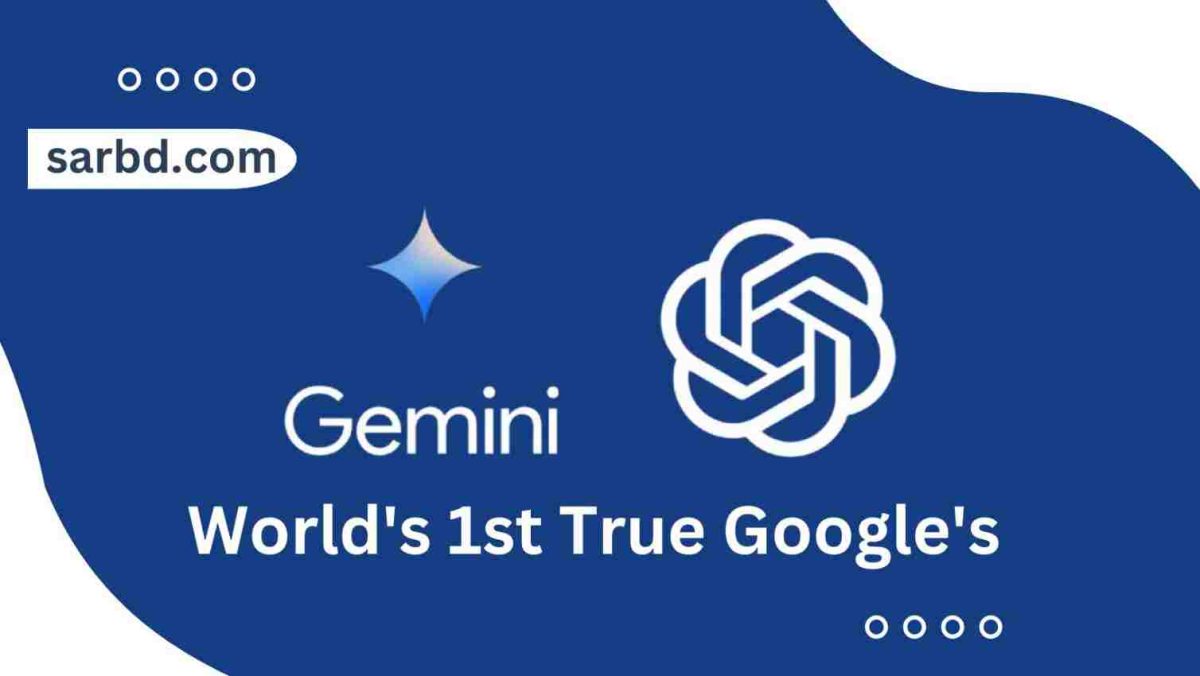Chat GPT Article Writing Method and Prompt: A Comprehensive Guide
In recent years, artificial intelligence has revolutionized many aspects of our lives, including the way we create content. One of the most notable advancements is the development of Chat GPT, an AI language model capable of generating human-like text. This guide will delve deep into the Chat GPT Article Writing Method and Prompt, offering detailed insights on how to effectively use this technology for content creation. Whether you are a seasoned writer, a content marketer, or a business owner, understanding this method can significantly enhance your productivity and creativity.
Understanding Chat GPT: A Brief Overview
Before diving into the Chat GPT Article Writing Method and Prompt, it’s crucial to understand what Chat GPT is and how it functions. Chat GPT, developed by OpenAI, is a sophisticated AI model based on the GPT-4 architecture. It uses machine learning techniques to generate coherent and contextually relevant text based on the input it receives.
What is Chat GPT?
- AI Language Model: Chat GPT is an advanced AI language model designed to understand and generate human-like text. It is capable of performing various language tasks such as translation, summarization, and content creation.
- Training Data: The model is trained on a diverse range of internet text, enabling it to generate text on almost any topic. However, it does not know specifics about which documents were part of its training set.
- Contextual Understanding: Chat GPT excels at maintaining context over a conversation or a series of inputs, making it suitable for tasks that require coherence and relevance.
How Does Chat GPT Work?
- Input and Output: Users provide an input prompt, and Chat GPT generates text based on that prompt. The quality and relevance of the output depend heavily on how the prompt is structured.
- Tokenization: The input text is tokenized into smaller units (tokens) that the model processes. The generated output is also tokenized and then converted back into human-readable text.
- Fine-Tuning: While the base model is powerful, fine-tuning on specific datasets can enhance its performance for particular tasks or industries.
The Importance of Effective Prompts
The effectiveness of the Chat GPT Article Writing Method and Prompt lies in crafting precise and informative prompts. A well-structured prompt guides the AI to generate relevant and high-quality content.
What is a Prompt?
- Definition: A prompt is the initial input or instruction given to Chat GPT to generate text. It can range from a single word to a detailed instruction.
- Purpose: The prompt serves as the foundation for the generated content. A clear and specific prompt leads to more accurate and relevant text.
Types of Prompts
- Single-Word Prompts: These are minimalistic and often used for brainstorming or generating ideas. For example, “Technology.”
- Question Prompts: Asking a question can elicit detailed and informative responses. For example, “What are the benefits of renewable energy?”
- Instructional Prompts: Providing detailed instructions can help generate structured content. For example, “Write a blog post about the benefits of renewable energy, including an introduction, three main points, and a conclusion.”
Crafting the Perfect Prompt: Best Practices
Creating effective prompts is an art that significantly impacts the quality of the generated content. Here are some best practices for crafting the perfect prompt for the Chat GPT Article Writing Method and Prompt.
Be Specific and Clear
- Clarity: Ensure that the prompt is clear and unambiguous. Vague prompts can lead to irrelevant or off-topic content.
- Example: Instead of “Write about technology,” use “Write an article about the impact of artificial intelligence on healthcare.”
- Specificity: The more specific the prompt, the better the output. Include details about the desired structure, tone, and key points to cover.
- Example: “Write a 500-word article about the benefits of renewable energy, focusing on solar, wind, and hydroelectric power.”
Provide Context
- Background Information: Including relevant background information helps the model understand the context better.
- Example: “In recent years, renewable energy has gained popularity as a sustainable alternative to fossil fuels. Write about the benefits of solar, wind, and hydroelectric power.”
- Audience Specification: Specify the target audience to tailor the content accordingly.
- Example: “Write an article about the benefits of renewable energy for high school students, explaining complex concepts in simple terms.”
Define the Structure
- Outline: Provide an outline or structure for the article to ensure it meets your requirements.
- Example: “Write a blog post about the benefits of renewable energy with an introduction, three main points (solar, wind, hydroelectric), and a conclusion.”
- Sections and Subheadings: Use subheadings to organize the content and make it more readable.
- Example: “Write an article with the following sections: Introduction, Benefits of Solar Energy, Benefits of Wind Energy, Benefits of Hydroelectric Energy, Conclusion.”
Specify the Tone and Style
- Tone: Define the tone of the article, whether it should be formal, informal, persuasive, or informative.
- Example: “Write an informative article about renewable energy with a formal tone.”
- Style: Specify the writing style to match your brand or personal preference.
- Example: “Write a blog post in a conversational style, similar to how a teacher would explain concepts to students.”
The Chat GPT Article Writing Method and Prompt: Step-by-Step Guide
Now that we understand the importance of effective prompts, let’s dive into the Chat GPT Article Writing Method and Prompt. This method involves several steps to ensure high-quality content creation.
Step 1: Define Your Objective
- Purpose: Clearly define the purpose of the article. Is it to inform, persuade, entertain, or educate?
- Example: “The objective of this article is to educate readers about the benefits of renewable energy.”
- Target Audience: Identify your target audience to tailor the content accordingly.
- Example: “This article is targeted at high school students interested in environmental science.”
Step 2: Research and Gather Information
- Topic Research: Conduct thorough research on the topic to gather relevant information and data.
- Example: Research the latest statistics and studies on renewable energy benefits.
- Key Points: Identify the key points you want to cover in the article.
- Example: Benefits of solar energy, benefits of wind energy, benefits of hydroelectric energy.
Step 3: Craft the Perfect Prompt
- Detailed Prompt: Create a detailed and specific prompt based on your research and objectives.
- Example: “Write a 500-word informative article about the benefits of renewable energy, focusing on solar, wind, and hydroelectric power. The article should be structured with an introduction, three main points, and a conclusion, and written in a formal tone.”
Step 4: Generate the Content
- Input the Prompt: Input the crafted prompt into Chat GPT.
- Review the Output: Review the generated content for accuracy, relevance, and coherence.
- Example: Ensure that the article covers all key points and is well-structured.
Step 5: Edit and Refine
- Editing: Edit the generated content for grammar, style, and flow.
- Example: Correct any grammatical errors and ensure the content flows logically.
- Refinement: Refine the content to match your specific requirements and preferences.
- Example: Adjust the tone or add additional information as needed.
Step 6: Final Review and Publishing
- Final Review: Conduct a final review to ensure the content meets your standards.
- Example: Check for any remaining errors or inconsistencies.
- Publishing: Publish the article on your desired platform.
- Example: Post the article on your blog or website.
Advanced Techniques for Optimizing Chat GPT Prompts
To master the Chat GPT Article Writing Method and Prompt, it’s beneficial to explore advanced techniques that can enhance the quality and relevance of the generated content.
Using Follow-Up Prompts
- Iterative Approach: Use follow-up prompts to refine and expand the generated content.
- Example: If the initial output is too brief, use a follow-up prompt like “Expand on the benefits of solar energy in more detail.”
- Clarification: Request clarification or additional information on specific points.
- Example: “Explain the environmental impact of wind energy in more detail.”
Leveraging Multiple Prompts
- Breaking Down Content: Use multiple prompts to break down complex topics into manageable sections.
- Example: Use separate prompts for each section of the article, such as “Write about the benefits of solar energy,” followed by “Write about the benefits of wind energy.”
- Combining Outputs: Combine the outputs from multiple prompts to create a comprehensive article.
- Example: Merge the content generated from individual prompts into a single, cohesive article.
Incorporating Feedback Loops
- Feedback and Refinement: Incorporate feedback loops to continually refine the content.
- Example: After generating the initial content, review it and provide feedback to improve accuracy and relevance.
- User Input: Use user input to guide the refinement process.
- Example: Ask colleagues or audience members for feedback on the generated content and use their suggestions to improve it.
Utilizing Contextual Prompts
- Contextual Information: Provide additional contextual information in the prompt to enhance relevance.
- Example: “Considering the recent advancements in renewable energy technology, write about the benefits of solar, wind, and hydroelectric power.”
- Specific Scenarios: Tailor the prompt to specific scenarios or use cases.
- Example: “Write an article about the benefits of renewable energy for homeowners looking to reduce their carbon footprint.”
Common Challenges and Solutions
While the Chat GPT Article Writing
Method and Prompt can be highly effective, it is not without its challenges. Here are some common challenges and solutions to ensure optimal results.
Challenge 1: Generating Irrelevant Content
- Solution: Craft more specific and detailed prompts to guide the AI. Ensure that the prompt includes clear instructions and key points to cover.
- Example: Instead of a general prompt like “Write about renewable energy,” use a detailed prompt like “Write a 500-word article about the benefits of renewable energy, focusing on solar, wind, and hydroelectric power.”
Challenge 2: Maintaining Coherence and Flow
- Solution: Use follow-up prompts and iterative refinement to ensure coherence and logical flow in the generated content.
- Example: If the content feels disjointed, use follow-up prompts like “Rewrite the introduction to better connect with the main points.”
Challenge 3: Addressing Factual Accuracy
- Solution: Conduct thorough research and provide accurate background information in the prompt. Review and fact-check the generated content.
- Example: If the AI generates incorrect information, correct it and use follow-up prompts to clarify the facts.
Challenge 4: Ensuring Unique and Plagiarism-Free Content
- Solution: Use the generated content as a foundation and add unique insights or additional information to make it original. Use plagiarism detection tools to ensure content originality.
- Example: Customize the generated content by adding personal experiences, expert quotes, or unique data.
SEO Optimization for Chat GPT-Generated Content
SEO optimization is crucial for ensuring that your Chat GPT-generated content ranks well on search engines. Here are some strategies to optimize content created using the Chat GPT Article Writing Method and Prompt.
Keyword Research and Integration
- Identify Keywords: Conduct keyword research to identify relevant keywords for your article.
- Example: Use tools like Google Keyword Planner or SEMrush to find keywords related to renewable energy.
- Integrate Keywords: Integrate the identified keywords naturally into the content.
- Example: Ensure that the keywords appear in the title, headings, and throughout the article without keyword stuffing.
Optimizing Headings and Subheadings
- Use Target Keywords: Include target keywords in your headings and subheadings.
- Example: Use a subheading like “Benefits of Solar Energy” instead of a generic heading.
- Organize Content: Use headings and subheadings to organize content logically and improve readability.
- Example: Break down the article into sections with clear and descriptive subheadings.
Enhancing Readability and Engagement
- Short Paragraphs: Write short, concise paragraphs to improve readability.
- Example: Limit each paragraph to 2-3 sentences.
- Bullet Points and Lists: Use bullet points and lists to present information clearly and concisely.
- Example: List the benefits of renewable energy in bullet points.
Internal and External Linking
- Internal Links: Include internal links to other relevant content on your website.
- Example: Link to a related article on renewable energy technology.
- External Links: Use external links to reputable sources to support your claims and provide additional information.
- Example: Link to authoritative websites like government agencies or academic institutions.
Meta Descriptions and Title Tags
- Compelling Meta Descriptions: Write compelling meta descriptions that include target keywords and encourage clicks.
- Example: “Learn about the benefits of renewable energy, including solar, wind, and hydroelectric power. Discover how renewable energy can help reduce your carbon footprint.”
- Optimized Title Tags: Ensure that title tags are optimized with target keywords and accurately reflect the content.
- Example: “The Benefits of Renewable Energy: Solar, Wind, and Hydroelectric Power”
Image Optimization
- Alt Text: Use descriptive alt text for images, including relevant keywords.
- Example: “Solar panels on a rooftop harnessing renewable energy”
- File Names: Use keyword-rich file names for images.
- Example: “solar-panels-renewable-energy.jpg”
The Future of AI in Content Creation
The Chat GPT Article Writing Method and Prompt represent a significant advancement in content creation. As AI technology continues to evolve, its impact on the content creation process will only grow.
Increased Efficiency and Productivity
- Time-Saving: AI can significantly reduce the time required to create high-quality content.
- Example: Instead of spending hours writing an article, you can generate a draft in minutes and refine it.
- Scalability: AI allows for scalable content production, enabling businesses to create more content in less time.
- Example: Generate multiple articles on different aspects of renewable energy for a comprehensive content strategy.
Enhanced Creativity and Innovation
- Idea Generation: AI can assist in brainstorming and generating new ideas for content.
- Example: Use Chat GPT to generate a list of potential topics for your blog.
- Creative Collaboration: AI can collaborate with human writers to enhance creativity and innovation.
- Example: Use AI-generated content as a foundation and build upon it with your unique insights and perspectives.
Personalized and Targeted Content
- Audience Insights: AI can analyze audience data to create personalized and targeted content.
- Example: Use AI to generate content tailored to specific audience segments based on their interests and preferences.
- Adaptive Learning: AI can adapt and learn from user interactions to continually improve content relevance and quality.
- Example: Use feedback loops to refine AI-generated content and ensure it meets audience needs.
Ethical Considerations and Challenges
- Bias and Fairness: Ensure that AI-generated content is free from bias and promotes fairness and inclusivity.
- Example: Regularly review and audit AI-generated content for potential biases.
- Transparency and Accountability: Maintain transparency and accountability in the use of AI for content creation.
- Example: Clearly disclose the use of AI in content generation and ensure human oversight.
Conclusion
The Chat GPT Article Writing Method and Prompt offer a powerful tool for content creators, marketers, and businesses. By understanding how to craft effective prompts and leveraging advanced techniques, you can harness the full potential of Chat GPT to create high-quality, engaging, and SEO-optimized content. As AI technology continues to evolve, its impact on content creation will only grow, offering new opportunities for efficiency, creativity, and innovation. Embrace the future of AI in content creation and elevate your content strategy with the Chat GPT Article Writing Method and Prompt.



